Colombia is one of the most diverse countries in the world with a huge variety in music, culture, religion, food, dialects, fauna and flora. The usual tourist favorites of Medellin, Cartagena and Bogota have a lot to offer but there is so much more to explore in this incredible country.
Each region discussed in this article has a very distinct population with its customs, culture and traditions which date back, at times, thousands of years or have emerged more recently as a result of colonization and economic changes.
I was born in the UK but I have had the pleasure of living in Colombia for 15 years. These are 4 of my favorite towns in Colombia you may never have heard of but should definitely consider visiting.
Leticia, the gateway to the jungle and amazing experiences
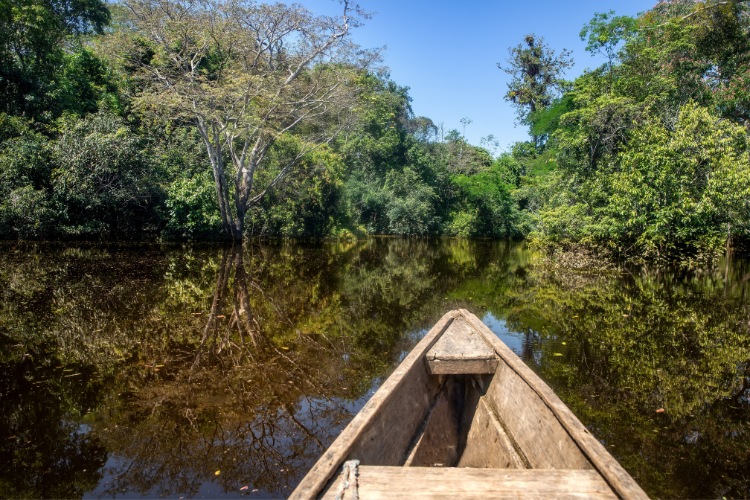
Leticia is Colombia’s southernmost city deep with the Amazon rainforest on the triple border with Peru and Brazil. This is the perfect jumping-off point to explore the Amazon and the Amazon rainforest while also offering its own charm and a good level of comfort for visiting tourists.
Leticia: Deep in the Heart of the Amazon
The population is around 35,000 with most settling and making a life in the city from other parts of Colombia alongside Witoto, Inga, Tucano, Ticuna, and Nukak indigenous communities. The town is a shipping point for tropical fish sent around the world.
The town has a year-round tropical rainforest climate, with temperatures usually between 22 (71.6F) and 30 (86F), although a record high of 39 (102.2F) recorded. Rainfall varies more significantly with June, July and August much drier but be prepared for heavy rain across the year.
The Amazon River also has strongly distinct high and low water seasons, with levels lowest in September and highest in May.
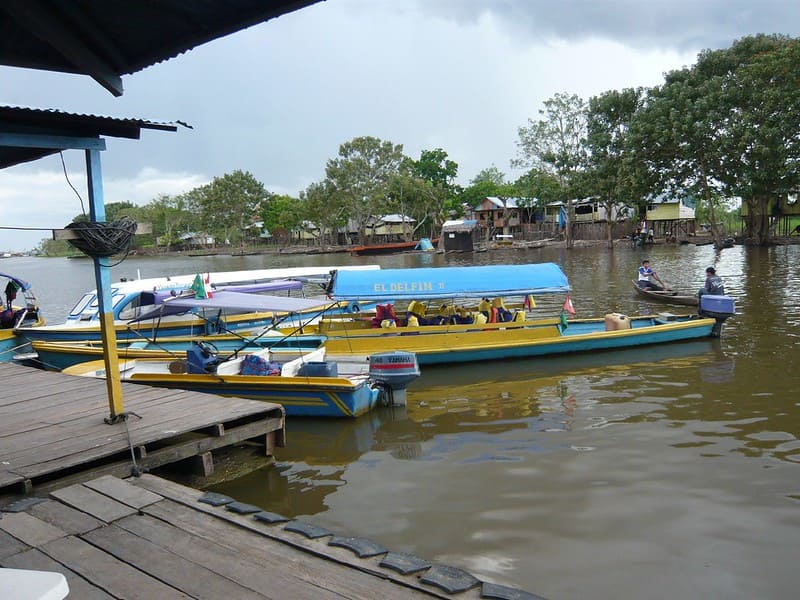
Experiencing the Amazon’s Diverse Wildlife
From Leticia, you can visit the surrounding Amacayacu and Cahuinarí national parks.
The jungle has over 5,000 species of plants and the biggest diversity of primates in the world. Colombia is the second most biodiverse country in the world and a third of all of the country’s bird species plus almost half mammal species are found in the parks close to Leticia.
You can book a day trip in town which will take you along the Amazon River to visit the Isla de los Micos (monkey island), an indigenous community and see the botos. Botos are primitive dolphins that live in the Amazon River. As part of a tour, you can stop on the river and see the animals swim.
Isla de los micos is exactly as advertised, there are hundreds of monkeys who live on the island and have become very familiar with their human visitors. Your guide will give you bananas to offer the monkeys and they will come close to receive the food. They are generally very calm and will sit on your head, happy to receive a free lunch. It is a great place to take photos and experience this moment with these intelligent, playful characters.
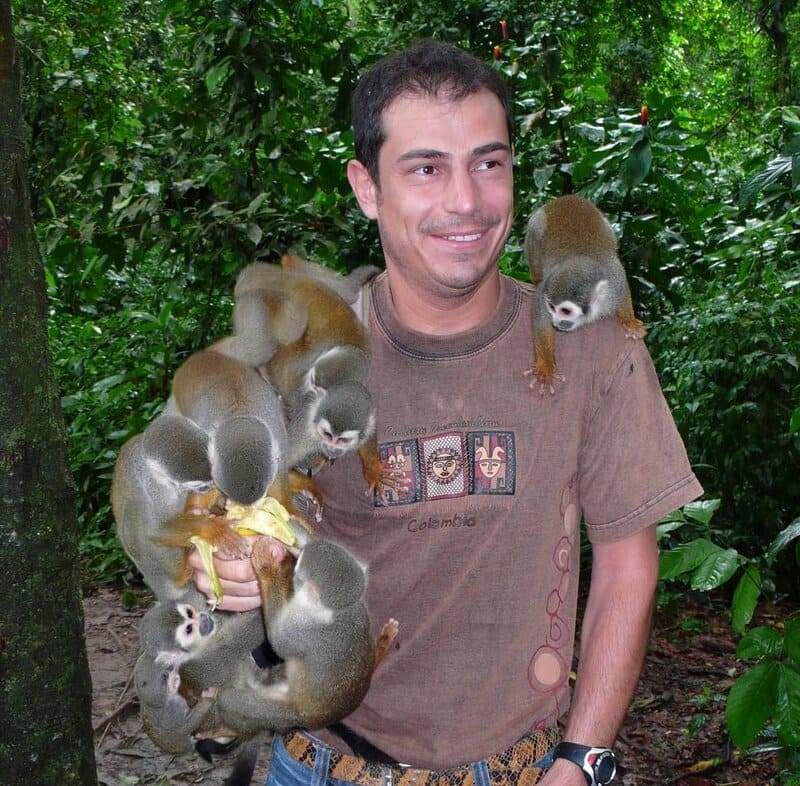
Leticia’s Cultural and Historical Highlights
Leticia’s central square has a large church called Nuestra Señora de la Paz which was built in 1934 and restored in 2000. You can pay to go to the top of the spire which has an excellent view over Parque Santander. Every day as the sun is setting, thousands of parakeets arrive in the park to settle for the evening, having spent the day feeding in the forest.
The sky is filled with birds and the sound of their shrieks echoes around the town as they interact and search for the best nesting spots. It is one of the most surreal and striking experiences I have ever had to see the setting sun blocked out by thousands of birds close overhead.
Check the video I snapped there:
⚠️ Remember to bring sunscreen and insect repellent when you go to Leticia and to ensure you have the yellow fever vaccine. There are 4 daily flights to and from Leticia’s airport from Colombia’s capital Bogota.
Neiva, stunning otherworldly desserts and fascinating history

Neiva is the capital of the Huila region of Colombia with a hot tropical savannah climate.
Neiva is South of most of the country’s major cities and is a fair distance from the areas usually visited by tourists. Benito Salas Airport has 3 short daily flights from Bogota or you can take a comfortable 7-8 hour bus ride from Cali or Bogota or around 12 hours overnight from Medellin.
Neiva has a population of around 340,000 while almost 98% of residents have white or European descent. The city expanded and became an important stop on the trade route between the Viceroyalty of Peru, Bogotá and Caracas in colonial times. Today the economy is focused on exporting rice, coffee, beef, milk, leather and agriculture.
Temperatures remain consistently in the mid 20s to the mid 30s. The skies are clear most of the time across the year with June, July and August particularly dry with the most rain in October and November. You will never need a jacket and rain is almost always welcome and refreshing.
The Tatacoa Desert: A Mars-like Adventure
The most popular and famous destination around Neiva is the Tatacoa desert, which evokes the feel of a distant planet mixed with some classic cowboy Wild West aesthetic.
The desert is actually a dry tropical forest with soil rich in minerals that give the land a range of warm red and gray colors. The wind and rain has formed an array of unique, unusual shapes which make you feel like you are walking on Mars. The nutrients in the soil means you will also find plenty of life with cactus trees, goats and birds.
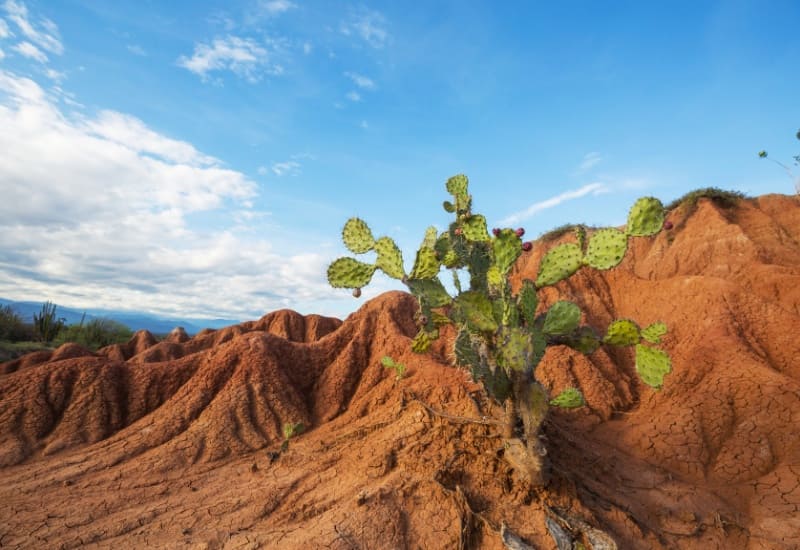
Tatacoa is the warmest part of Colombia with an average temperature of 35 degrees but the heavy rain in April and May keeps the area green and means technically the Tatacoa desert isn’t a desert.
The Red Desert (also known as Cuzco) is the most famous area of Tatacoa with iron leaving the soil copper red. You can get great views over the surreal landscape from Mirador El Cuszo and Mirador Laberinto. There is a 90-minute trail that runs between the hills with cactus plants, scorpions, colorful birds, scorpions, goats and snakes along the way.
I completed a 5km race up and down between the formations in Cuzco with the fitness mad family of my ex-girlfriend (I finished a long way behind her dad but did beat her 9 year old sister, so I will take that as a win). Temperatures at sunrise and sunset are much cooler and you get some spectacular views.
The Gray Desert is 30 minutes from Cuzco and is known as “the valley of the ghosts”. The moon-like landscape is spectacular at sunset as the subtle colors stand in contrast to the cold, white formations.
The Tatacoa Desert is also one of the best places in South America to see the stars. There is almost no light pollution and the skies are often very clear. It is possible to see the galaxy with the naked eye and there is an observatory with 6 huge telescopes. It costs 10,000 COP (US$2.50) for a tour and a chance to look through the telescopes.
Exploring the Ancient Andean Heritage
Southwest of Neiva you will also find a UNESCO heritage site with 1st century archaeological remains from an ancient Andean civilization. The large sculptures are incredibly well preserved and depict human forms with a range of emotions giving a remarkable insight into the cultural expression of ancient people.
The statues are from an 80-hectare area around the town of San Agustin. There are over 100 statues, 8 mounds and the park to preserve the monuments offers a chance to teach visitors what has been learnt from these mysterious ancient people.
Entry to the park costs 65,000 COP (US$16) and is open daily from 8am to 4pm.
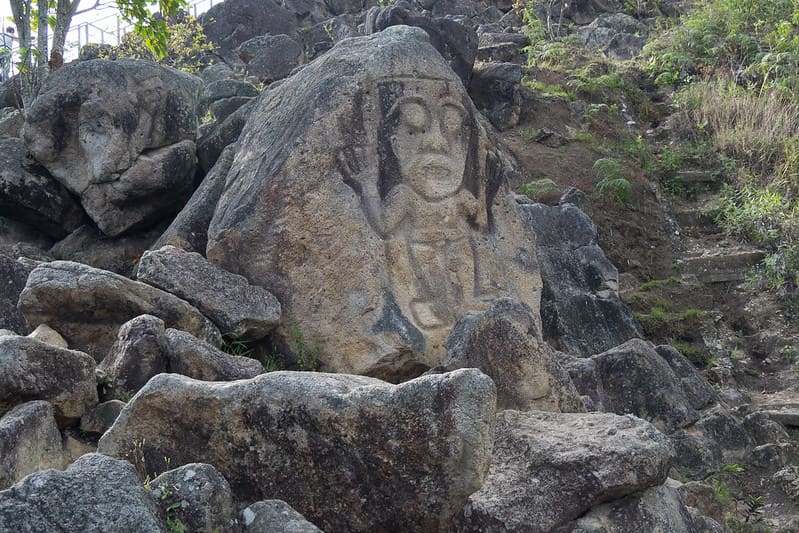
Neiva has a close community feel and there are a few major bars and clubs where locals head out. Olé is the major club with 3 spaces and some fairly high-profile artists performing. There is a bar area to the left with big screens to watch sporting events, there is an outdoor terrace area with live singing and then a large indoor club with table service.
Festival Folclórico y Reinado Nacional del Bambuco or San Pedro as it is locally known is the annual carnival held in the second half of June with parades, a beauty pageant, musical performances and traditional festivities.
Nuquí, explore this culturally rich, almost untouched Pacific paradise
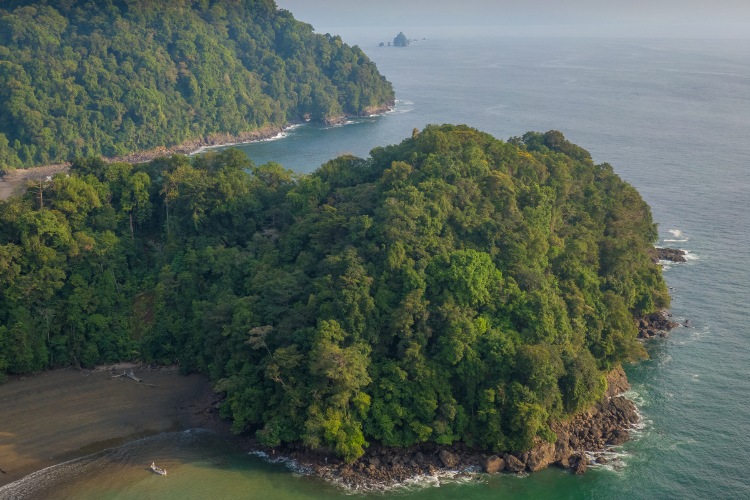
Nuquí, located on Colombia’s lush Pacific coast, is an area of the country with unique biodiversity, pristine beaches and authentic local experiences. Nuqui is a town of just over 8,000 inhabitants in the Chocó department of Colombia on the Western coast.
Over 95% of the population of Chocó are Afrodescendent and it is a region renowned for music, culture, art and passionate, lively religious festivals.
Nuquí is a small municipality that preserves its authenticity and charm. Its dirt streets and the hospitality of its inhabitants will immerse you in the authentic peaceful Colombian life.
Nuquí’s climate is tropical, with warm temperatures throughout the year. However, keep in mind that tropical showers are common, especially between April to November. It is advisable to plan your visit during the dry season to make the most of nature and outdoor activities.
The easiest way to get to Nuquí is by flying from Medellín or Quibdó with Satena offering 1 daily flight from each city. The planes are very small but reliable and the new Reyes Murillo Airport is obviously simple. You can take a short boat from Nuquí airport to your hotel or take a 6 hour speed boat from Chocó’s capital Buenaventura which also has an airport.
Whale Watching and Beach Bliss in Nuquí
Nuquí is famous for being one of the best places to spot humpback whales. Mating season is from June to October and this is when you will be able to see these animals close to Nuquí. Mid-August is the optimal time for this experience but you should see whales throughout that period.

Nuquí and the surrounding area has some incredible pristine beaches such as Guachalito and Termales. Perfect for relaxing, swimming and enjoying the natural environment as you lie on the sand between the clear water and the native rainforest.
You can also arrange hikes through the jungle with a guide where you explore the rich biodiversity, swim in waterfalls and spot exotic birds in the trees all around.
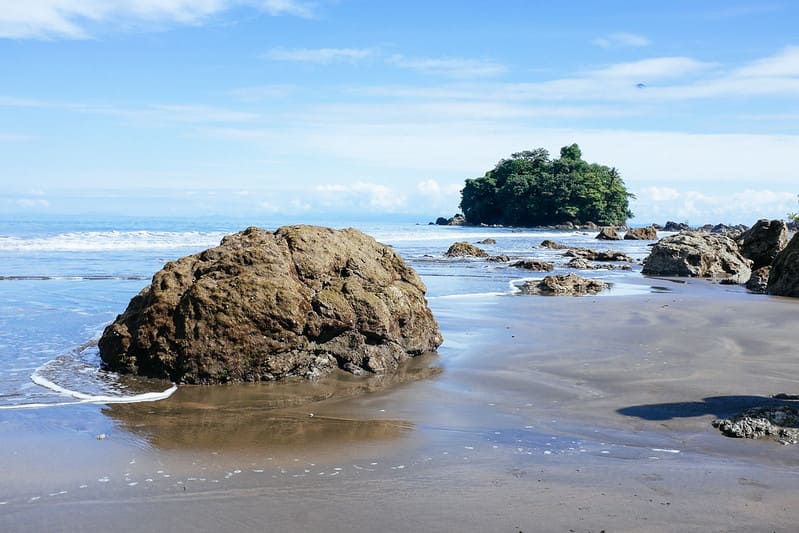
Remember to take light clothing and sunscreen plus a waterproof top layer for the heavy rail. It is also important to preserve this natural paradise by taking care and being responsible for the impact your visit has.
While the state capital Buenaventura has felt the impact of the gangs and the drug trade, the city port has been key in cocaine exports, Nuquí is very much focused on tourism and has not had the same security issues.
Nuquí offers a unique experience where wild nature meets local culture. From whale watching to pristine beaches, every moment in Nuquí is an opportunity to connect with the authenticity of Colombia’s Pacific coast and create lasting memories.
Cabo de la Vela, meet Colombia’s indigenous Wayúu people where the desert meets the sea
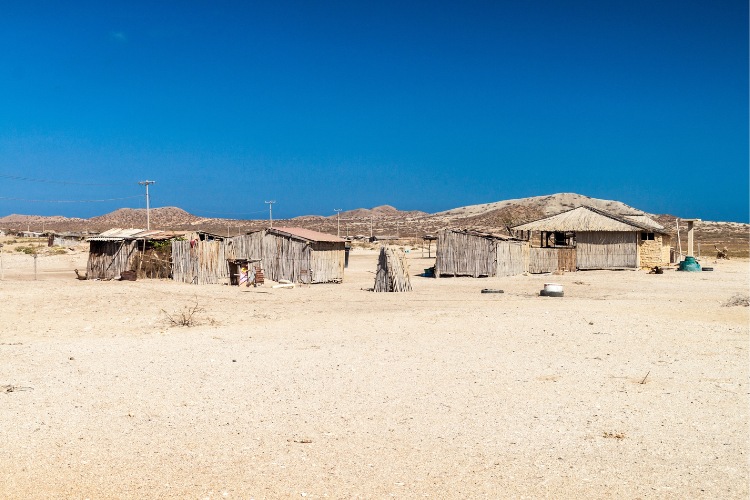
Cabo de la Vela is a headline in the Guajira Peninsula which has grown from a cluster of small fishing settlements to a burgeoning tourist destination for those looking to enjoy the unique nature and explore this special region.
The Wayúu Legacy: A Cultural Mosaic in La Guajira

La Guajira is the most northerly state in Colombia, bordering Venezuela on the Caribbean coast. Today the indigenous Wayúu still make up 45% of the population of La Guajira with over 500,000 residents. Liverpool winger and Colombia’s new superstar Luis Diaz is from this community.
This part of the country is full of color with amazingly diverse landscapes and a proud, resilient local population which resisted Spanish colonialism to retain their thousand-year-old traditions.
Kitesurfing and Beyond: The Lure of Cabo de la Vela
Cabo de la Vela has perfect conditions for kitesurfing with calm waters and consistent winds attracting visitors from around the world. There are 2 kitesurf schools in the town with both offering hostel accommodation. This is a great place to start to learn or develop your skills.
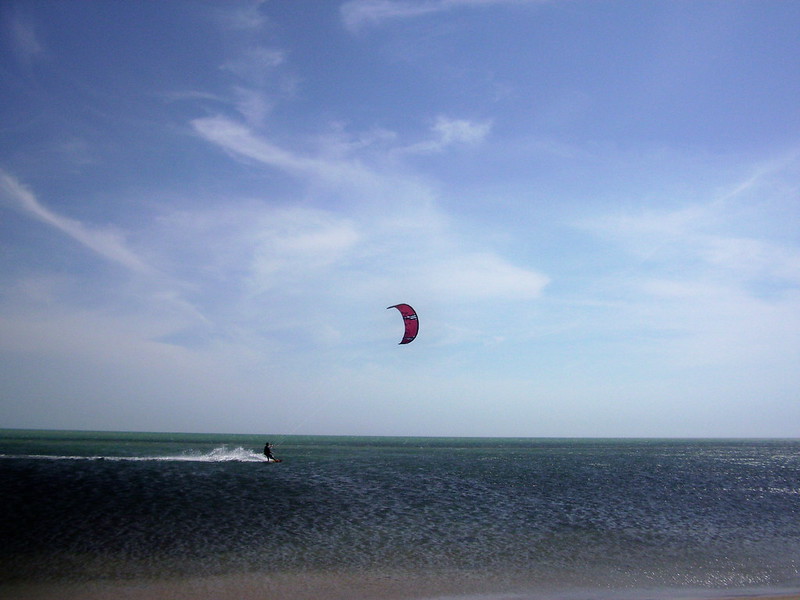
If you continue along the coast from Cabo de la Vela you arrive at Punta Gallinas which is the most northerly point in South America. The beaches are perfect with golden sand and turquoise waters. There are very few tourists this far north and you can enjoy complete relaxation with nothing but the breeze, a handful of local vendors, a hammock and a beer. You can also roll or slide down the Taroa Dunes directly into the warm Caribbean waters.
It is possible to get from Cabo to Punta Gallinas by jeep or boat.
You can also visit the Protected Natural Area of Los Flamencos, a bird sanctuary known for its beautiful array of pink flamingos plus many other species that call the region their home for part of the year. You can sail in a small wooden sailboat to see the birds without disturbing them. Then head back to the beach for some deliciously fresh seafood caught by the locals.
To get to La Guajira you can take a bus from Santa Marta, Tayrona or Palomino to the capital Riochacha. The bus should take around 4 hours depending where you start. From Riochacha you can take a shared taxi (90 minutes and around 10,000 COP, US$2.50, per person) to Uribia and then a jeep up to Cabo.
To get to Punta Gallinas you can get a round-trip jeep tour for about 150,000 COP (US$37) which can be booked in Cabo with a guide.
La Guajira is a very poor region and tourism is only starting to have an impact but the locals are welcoming, as long as it is supported sustainably. Showers are generally from a bucket of cold water, lunch is often the choice between fish or goat. Don’t expect great luxury but you will have the chance to really connect with the community. Remember sun cream and lots of water as it is very hot and dry.
Wayúu mochilas (bags made with intricate, individual designs) have become very popular and you can buy directly from the producers and support the community.
